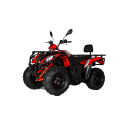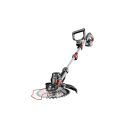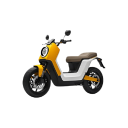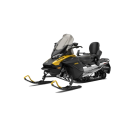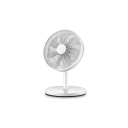-
19
-
2025-07-02 13:20:35
Starter Motor Cleaning
1. Role and Importance of the Starter Motor
The starter motor is an indispensable and crucial component within a car's ignition system. Functioning as a high - powered electric motor, its operation is triggered when the car owner turns the key in the traditional ignition system or presses the start button in modern keyless - start systems. Once activated, it rapidly rotates the engine several times. This rotation is essential as it enables the fuel system to inject fuel into the combustion chamber in the correct quantity and at the right time, and simultaneously allows the ignition system to generate a spark to ignite the fuel - air mixture. In essence, without a properly functioning starter motor, the engine cannot be cranked over, and the vehicle will not start.

2. Consequences of a Dirty or Poorly Maintained Starter Motor
2.1 Slow or Failed Starting
Accumulated dirt on the starter motor can impede its performance. Carbon dust from brush wear, for example, can coat the commutator, which is the part of the motor that transfers electrical power between the stationary and rotating parts. This coating increases electrical resistance, leading to a reduced flow of current. As a result, the motor may not receive sufficient power to rotate the engine at the required speed, causing slow starting. In severe cases, the resistance can be so high that the motor fails to turn at all, leaving the vehicle unable to start.
2.2 Increased Wear and Tear
Over time, impurities such as dust, dirt, and small particles that find their way into the starter motor can act like abrasive materials. When the motor is in operation, these particles rub against the internal components, such as the gears, bearings, and the armature shaft. This continuous abrasion is similar to the effect of sandpaper on metal surfaces, gradually wearing down the components. As a result, the lifespan of the starter motor is significantly shortened, and it may require premature replacement.
2.3 Electrical Issues
Dirt and corrosion on the electrical connection points within the starter motor can disrupt the normal flow of electricity. Oxidation of the contacts due to exposure to moisture and air forms a layer of non - conductive material. This layer increases the resistance at the connection points, leading to poor electrical contact. In some cases, the connection may become so poor that the motor receives an inconsistent or insufficient power supply. Additionally, if the dirt and moisture penetrate the insulation of the electrical windings, it can cause a short - circuit, which can not only damage the starter motor but also pose a risk to the entire vehicle's electrical system.
2.4 Higher Maintenance Costs
Ignoring the cleaning and maintenance of a dirty starter motor can lead to costly repairs. If the motor fails due to accumulated dirt and wear, the entire starter motor may need to be replaced. Starter motors are not inexpensive components, and the cost of replacement includes not only the price of the new part but also the labor cost for installation. In some cases, if the electrical issues caused by a dirty starter motor have damaged other components in the vehicle's electrical system, such as the battery, alternator, or ignition switch, the repair costs can skyrocket.
3. Pre - Cleaning Preparations
3.1 Safety Precautions
1. Personal Protective Equipment: Before starting any work on the starter motor, it is essential to wear appropriate personal protective equipment. Gloves should be worn to protect the hands from cuts, abrasions, and exposure to cleaning chemicals. Goggles are necessary to shield the eyes from any debris, dust, or splashes of cleaning agents that could cause injury.
2. Disconnecting the Battery: The vehicle's battery must be disconnected before working on the starter motor. This is a critical safety measure to prevent the risk of electric shock. First, use a wrench to loosen the nut on the negative battery terminal, which is usually black. Then, carefully remove the negative cable from the battery. After that, disconnect the positive battery terminal, typically red, in the same manner. Disconnecting the battery also helps prevent short - circuits that could occur during the cleaning process if the electrical connections of the starter motor are accidentally touched.
3.2 Tools and Materials Required
1. Wrenches: A set of wrenches is needed to remove the bolts that secure the starter motor to the engine or transmission. The size of the wrenches may vary depending on the vehicle model, but commonly, wrenches in the range of 10mm - 13mm are used.
2. Wire Brush: A wire brush is useful for removing corrosion and stubborn dirt from the surface of the starter motor and its electrical connection points. The bristles of the wire brush can effectively scrape away the rust and grime, ensuring a clean and proper connection.
3. Specialized Electrical Cleaner: A specialized electrical cleaner, such as a contact cleaner like DeoxIT, non - chlorinated brake cleaner, or a professional electronics cleaner, is essential for cleaning the electrical components of the starter motor. These cleaners are designed to evaporate quickly without leaving any residue that could interfere with the electrical operation of the motor.
4. Clean Rags or Cloths: Several clean rags or cleaning cloths are required for wiping down the various parts of the starter motor during and after cleaning. They are used to remove dirt, cleaning agents, and any remaining debris from the motor's surface.
3.3 Locating the Starter Motor
The location of the starter motor can vary depending on the type of vehicle. In rear - wheel - drive cars, the starter motor is typically positioned on the side of the engine, near the flywheel. It is usually mounted to the engine block or the transmission housing. For front - wheel - drive cars, the starter motor is often located near the front bumper, usually in the engine compartment. If you are unsure of the exact location of the starter motor in your vehicle, referring to the vehicle's user manual is highly recommended. The user manual will have detailed diagrams and descriptions that can help you accurately locate the starter motor.
4. Detailed Steps to Clean the Starter Motor
4.1 Removing the Starter Motor from the Vehicle
1. Safety Confirmation: Before beginning the removal process, double - check that the vehicle's battery is completely disconnected. This extra precaution ensures that there is no risk of electric shock during the removal of the starter motor.
2. Locating and Removing Bolts: Identify the bolts that hold the starter motor in place. Generally, the starter motor is secured to the engine or transmission by 2 - 3 bolts. Use a wrench of the appropriate size to carefully unscrew these bolts one by one. It is important to keep the bolts in a safe place to prevent losing them, as they will be needed for reinstallation.
3. Disconnecting Electrical Connections: The starter motor is connected to the vehicle's electrical system by wires. These wires include a connection to the battery and a control wire. Carefully unplug or unscrew these connections. Some connections may be held in place by nuts that require a wrench or a screwdriver to loosen. When disconnecting the wires, be gentle and avoid pulling on the wires forcefully, as this could damage the wires or the connection points.
4. Extracting the Starter Motor: Once all the fixing bolts and electrical connections have been loosened, carefully remove the starter motor from the vehicle. The starter motor can be relatively heavy, so it is important to support it properly when removing it to avoid dropping it, which could cause damage to the motor or injury to yourself. Place the removed starter motor on a clean and stable workbench for the subsequent cleaning steps.
4.2 Cleaning the Exterior of the Starter Motor
1. Preliminary Wiping: Put on gloves and use a clean, dry cloth to initially wipe away the dust and loose dirt from the surface of the starter motor housing. This step helps to remove the larger and more easily removable particles, making the subsequent deep - cleaning process more effective.
2. Deep Cleaning: Dip a brush into an appropriate amount of degreaser and use it to scrub the starter motor housing thoroughly. Pay special attention to areas where dirt tends to accumulate, such as the heat sinks (if present) and the mounting brackets. When scrubbing, use a moderate amount of force to avoid scratching the surface of the housing.
3. Rinsing and Drying: After scrubbing, rinse the starter motor housing with clean water to ensure that all the degreaser and dirt are completely removed. Then, use a clean cloth or compressed air to dry the starter motor thoroughly. It is crucial to remove all water residue, as water can cause the starter motor to rust over time or lead to electrical faults if it gets into the internal electrical components.
4.3 Inspecting and Cleaning Internal Components (Professional - Level Procedure)
1. Disassembly: Using appropriate tools such as screwdrivers and wrenches, carefully open the starter motor housing. During disassembly, it is important to note the position and order of each component. Marking the components with a marker or taking pictures can be helpful to ensure correct reassembly later. Be extremely careful not to damage any of the internal components during the disassembly process.
2. Component Inspection: Thoroughly inspect the internal components of the starter motor. Check the gears for signs of wear, such as chipped teeth or excessive smoothness. Examine the brushes to see if they are worn down. The length of the brushes should be within the manufacturer's specified limits; if they are significantly shorter, they may need to be replaced. Look at the commutator, which is the part of the motor that the brushes make contact with. The commutator surface should be smooth and free of scratches or pitting. Check the solenoid switch for proper contact and signs of burning or corrosion.
3. Component Cleaning:
- Electrical Components: For electrical components like brushes, commutators, and solenoid switch contacts, use an electrical cleaner and a clean cloth. Spray the cleaner onto the cloth and then gently wipe these components to remove oil, dust, and oxides. This helps to ensure good electrical conductivity. Avoid spraying the cleaner directly onto the components, as the liquid could seep into other parts of the motor that do not need cleaning.
- Gears: Use a brush dipped in an appropriate cleaner to scrub the internal gears of the starter motor. This removes oil and impurities from the gear surfaces, which can affect the smooth operation of the gears. After scrubbing, dry the gears with a clean cloth.
- Debris Removal: Use compressed air or a small brush to remove any debris, dust, or small particles from the inside of the starter motor. This ensures a clean internal environment for the motor to operate efficiently. When using compressed air, be careful to control the air pressure to avoid damaging the delicate internal components.
4.4 Lubricating Moving Parts
1. Selecting the Right Lubricant: Choose a lubricant based on the manufacturer's recommendations for the starter motor. For gears and shafts, a light mechanical oil or a specialized gear lubricant is often suitable. For the moving parts of the solenoid switch, a small amount of grease can be used. The right lubricant helps to reduce friction between moving parts, which in turn reduces wear and tear and improves the overall efficiency of the starter motor.
2. Lubrication Process:
- Gear Lubrication: Apply a thin, even layer of lubricant to the surface of the starter motor's gears. Make sure that all the tooth surfaces are coated with the lubricant. However, be careful not to over - lubricate, as excess lubricant can splash onto other components and cause problems, such as attracting more dirt or interfering with the electrical operation of the motor.
- Shaft and Bearing Lubrication: Place an appropriate amount of lubricant into the shaft and bearing areas of the starter motor. This allows the shaft to rotate smoothly within the bearing, reducing friction and preventing premature wear of the bearing.
- Solenoid Switch Lubrication: Apply a small amount of grease to the moving contacts and pivot points of the solenoid switch. This helps to ensure that the solenoid switch operates smoothly and makes good electrical contact when activated.
4.5 Reassembling and Installing the Starter Motor
1. Reassembly: Install the cleaned and lubricated components of the starter motor back into their original positions in the reverse order of disassembly. Ensure that each component is correctly aligned and firmly connected. Double - check that no parts are missing and that all the gaps and positions between components meet the manufacturer's specifications.
2. Mounting the Starter Motor: Place the reassembled starter motor back in its original location in the vehicle. Use the previously removed bolts to secure the starter motor to the engine or transmission. Tighten the bolts using a wrench to the appropriate torque specified by the vehicle manufacturer. This ensures that the starter motor is firmly mounted and will not vibrate or loosen during the vehicle's operation.
3. Connecting Electrical Circuits: Reconnect the electrical wires that were disconnected earlier. Make sure that the connections are secure, with the plugs inserted tightly and the nuts tightened properly. Check that the positive and negative connections are correct to avoid damaging the starter motor or the vehicle's electrical system due to incorrect polarity.
5. Post - Cleaning Inspection Work
5.1 Connecting the Battery and Testing the Starter Motor
1. Battery Connection: After the starter motor has been reinstalled and the electrical connections have been made, reconnect the vehicle's battery. First, connect the positive battery cable to the positive terminal of the battery and tighten the nut. Then, connect the negative battery cable and tighten its nut.
2. Starter Motor Testing: Turn off all the vehicle's electrical devices to ensure a clear test. Insert the key into the ignition switch and turn it to the start position. Observe the operation of the starter motor. Under normal circumstances, the starter motor should start the engine quickly and smoothly, without any abnormal noises, such as grinding, rattling, or clicking. If the starter motor functions properly, it indicates that the cleaning and maintenance work has been successful. However, if the starter motor still has problems, such as slow starting, failure to start, or abnormal noises, further inspection and troubleshooting are required.
5.2 Troubleshooting Common Problems After Cleaning
1. Starter Motor Not Working: If the starter motor does not work at all after cleaning, start by checking the battery connection. Ensure that the cables are firmly attached to the battery terminals and that there is no corrosion at the connection points. Use a multimeter to measure the battery voltage; a fully charged 12 - volt car battery should have a voltage of around 12.6 - 12.8 volts. If the battery voltage is normal, check the electrical circuit connections of the starter motor. Look for any loose wires, open circuits, or short - circuits. The solenoid switch of the starter motor may also be faulty; if it does not engage properly, the starter motor will not receive power.
2. Slow Starting: Slow starting after cleaning could be due to several reasons. It might be that the internal components of the starter motor are still not thoroughly cleaned. For example, the brushes may not be making good contact with the commutator, or there may be insufficient lubrication between the gears. Another possibility is that the battery is not fully charged or there is a problem with the vehicle's electrical system that is causing a voltage drop when the starter motor is engaged. To address this, clean the internal components of the starter motor again, check the condition of the brushes, and consider replacing them if they are worn. Also, check the battery's charging system and look for any electrical leaks in the vehicle.
3. Abnormal Noises: Abnormal noises during startup could indicate several issues. If the noises are a grinding or rattling sound, it may be that the gears inside the starter motor are worn or misaligned. There could also be foreign objects inside the motor that are causing the noise. Disassemble the starter motor to inspect the gears and remove any foreign objects. If the noise is a clicking sound, it could be related to the solenoid switch not engaging properly or a problem with the electrical connection. Check the solenoid switch and the electrical connections to ensure they are functioning correctly.
6. Maintenance Tips to Keep the Starter Motor Clean
6.1 Regular Cleaning Intervals
It is advisable to clean the exterior of the starter motor regularly. A good rule of thumb is to perform an external cleaning every 10,000 - 15,000 kilometers or every six months, depending on the driving conditions. If the vehicle is frequently driven in dusty, muddy, or dirty environments, the cleaning frequency may need to be increased. For the internal components of the starter motor, they do not need to be cleaned as frequently. However, if there are signs of poor performance, such as slow starting or abnormal noises, an internal inspection and cleaning may be necessary.
6.2 Checking Electrical Connections
During each vehicle maintenance, carefully inspect the electrical connections of the starter motor. Ensure that the wires are firmly attached to the motor and the battery terminals. Look for any signs of damage, such as frayed wires, cracks in the insulation, or corrosion at the connection points. If any problems are detected, replace the damaged wires or clean the corroded connection points. Applying a small amount of conductive paste to the connection points can help improve the electrical connection and prevent future corrosion.
6.3 Avoiding Overuse of the Starter Motor
When starting the vehicle, do not hold the ignition switch in the start position for more than 5 seconds at a time. If the engine does not start on the first attempt, wait for at least 15 seconds before trying to start it again. This waiting period allows the starter motor to cool down and reduces the risk of overheating and damage. Avoid starting the vehicle repeatedly in quick succession, as this can put excessive stress on the starter motor and the battery. If the vehicle fails to start after three consecutive attempts, stop and check other systems, such as the fuel system, ignition system, or battery, before attempting to start again.
6.4 Keeping the Vehicle Clean
Maintaining the overall cleanliness of the vehicle, especially the engine compartment, can help keep the starter motor clean. Regularly clean the engine compartment using compressed air or a damp cloth to remove dust, dirt, and debris. This reduces the amount of dirt that can enter the starter motor and cause problems. Avoid parking the vehicle in areas where there is a lot of dust or dirt, such as construction sites or unpaved roads, for extended periods.
6.5 Paying Attention to the Parking Environment
Park the vehicle in a dry and well - ventilated place whenever possible. Avoid parking in areas that are prone to high humidity, such as near bodies of water or in damp garages. High humidity can cause corrosion in the starter motor, especially in the electrical connection points and the internal components. If the vehicle needs to be parked for an extended period, it is a good idea to start the engine and let it run for a few minutes every week. This helps to keep the starter motor and other engine components in good working condition.
7. Summary of the Starter Motor Cleaning Process
The cleaning process of the starter motor involves several crucial steps. First, safety precautions such as disconnecting the battery




